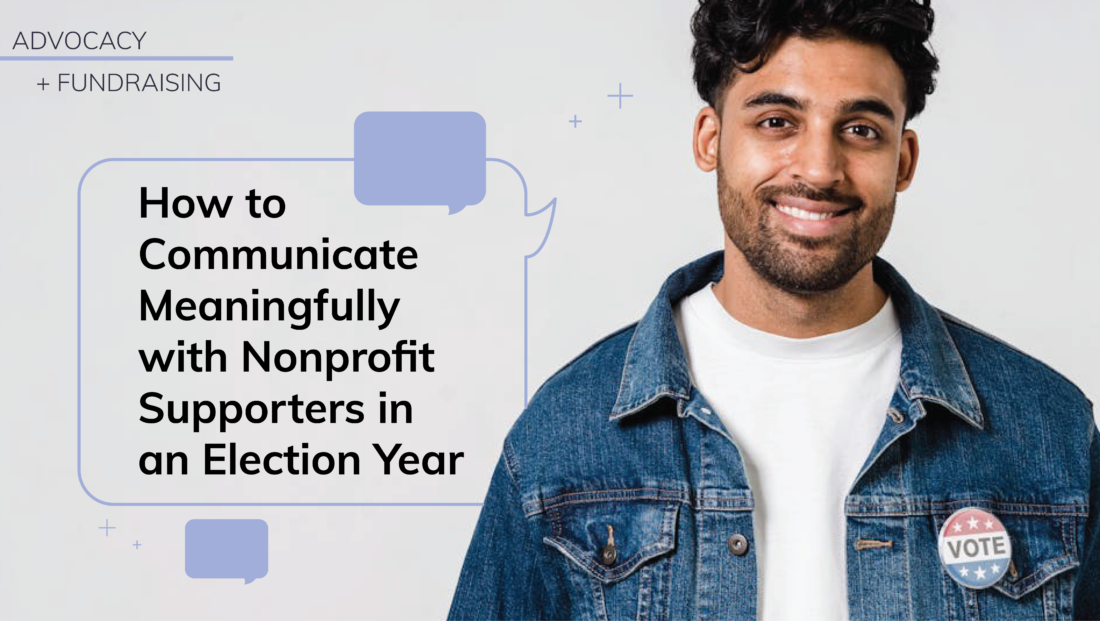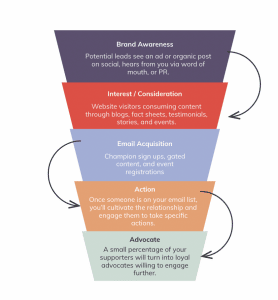
How to Communicate Meaningfully with Nonprofit Supporters in an Election Year
For nonprofits in the U.S. and around the world, this coming November’s presidential election will be a stage on which events that impact society, economy, business, and philanthropy will play out. Understanding your nonprofit audiences—their hearts and minds, wallets and worlds—is critical to successfully communicating in an election year.
It’s more important than ever to share your mission in a way that is real, relevant, and sensitive to what’s going on within your organization’s environment and the impact of your work. Explore Media Cause experts’ top five communication tips to consider as you roll out your advocacy, fundraising, and engagement strategies during an election year.
One—Acknowledge Your Environment + Lead with Your Mission
Yes, the presidential election is important and will be commanding the attention of the media and masses alike. And yes, earlier this year, Sesame Street’s Elmo broke the Internet when he asked the simple question, “How is everybody doing?” It’s incredibly important to acknowledge the overall public mindset and recognize the ever-evolving environment that your nonprofit currently exists in; but, it doesn’t need to completely define your organization or the conversation you’re having with your audiences.
Remember, as you navigate the news cycle and other big issues, they shouldn’t take away from the importance of your work as a nonprofit. Continue to engage with your audiences, sharing how critical your mission is and, given current events, how it may be even more critical than ever before.
There are, and always will be, other headlines, but your supporters are your supporters because they care about your work. While their environment may change (which you should acknowledge), you can continue to give your audiences real ways to engage with your organization’s mission and participate in moments of impact.
Two—Find Key Moments
There may be moments where the election and the surrounding conversations put your issues in center stage, which are excellent opportunities for your organization to share your mission’s meaning, perspective, and expertise. Policy and marketing team members within your nonprofit can make a great team to plan accordingly. Partnering with a marketing agency, like Media Cause, with experts skilled at crafting strategic communications can help you identify and capitalize on key moments for messaging in an election year.
One way to be prepared for these spotlight moments, or even the unforeseen, is to identify your spokespeople, develop thought leadership profiles in advance, and have some rapid response frameworks developed and disseminated across teams.
Three—Mind the Calendar + Communicate Precisely
The months nearest to the election, October especially, are going to be some of the toughest times to reach your audiences. Ad budgets will likely be on fire in the race to the ballot box. And, with Giving Tuesday falling in December, the end-of-year calendar hits differently this year. This year’s calendar requires careful planning and timing based on your organization, issue area, and advocacy, fundraising, and campaign activations. Use the thought starters below to consider how your team should pivot and plan.
How will this year’s calendar:
- …have implications for timing?
Consider whether you should avoid October for an appeal to audiences altogether or how you can find timely moments to strategically cut through the clutter. - …impact messaging in an election year?
As you bring your mission to your followers’ attention to connect and make direct asks, steer clear of generalizations. Power comes from specificity. Instead of saying, “In these dire times…,” clarify ‘why’ that action is both important and timely. - …change post-November strategies?
Ahead of time, discuss how each possible outcome of the election could impact your nonprofit and plan for each. Then, pivot your strategy and communications accordingly once the results are in.
Four—Cut Through the Noise, Meaningfully
With continuous noise and incoming communications from many different organizations and parties competing for attention, your audiences’ inboxes, mailboxes, and social feeds will be filled to the brim.
Many of your supporters will have at least one thing in common this year—they’ve already been and will continue to be incessantly asked to donate across channels. This doesn’t mean donation asks are bad or should be slowed; the real learning is that you can and should be mindful about also giving your supporters other ways to be impactful.
Amidst the clutter and noise, meet your donors and supporters where they are within your marketing funnel, and make the asks that work with where they are in that part of the journey—from virtual stranger to loyal advocate for your cause.

Provide breaks in the onslaught and give your audiences creative and meaningful ways to contribute. Then, rinse and repeat. When encouraging audiences to participate in advocacy actions, consider what would be most meaningful or attainable for them. For people who are new to your organization, invite them to start by contacting their members of Congress and/or voicing their support for a bill or policy position. For people who have been with you for some time, give them other ways to re-engage with your work and have an impact in other ways, like volunteering.
Important Note: If your organization has a 501(c)(3) status, keep this in mind when planning and communicating in an election year. Be careful to comment on policy, not politics. The Alliance For Justice and Nonprofit Vote both have great resources for detailed guidance on doing this well.
Five—Communicate Compassionately + Sound Like a Person
Your ability to engage, motivate, and mobilize your supporters when communicating in an election year is directly linked to your understanding of who they are. At the forefront of all communication, know your audiences. Your supporters are not monoliths or boiled-down demographic survey respondents. They are real people. While they all might not be in the same place, they all have concerns and cares outside of your mission, the news cycle, and the public forum. As always, connecting with your supporters depends deeply on knowing them well, developing a meaningful relationship, and communicating with them based on that relationship.
Use the thought exercise below to discuss your audiences and your nonprofit’s relationship with each of them:
- How will you surprise and delight your donors this year?
- How will you build bridges that connect advocacy with financial support and back again?
- Have you mapped out distinct user journeys and opportunities for engagement for every step of the marketing funnel?
- Do you know your audiences well enough to do each of the above well?
Remember, people connect with people, as well as identity. You don’t want to be the vague, remote speaker from the stage; you want to be the known, trusted friend right beside them. No matter what your brand voice and positioning are, there are always ways to be in conversation with your audiences rather than broadcasting to them.
It’s going to be a year—but we’re in it together.
Messaging in an election year is not typically the easiest for nonprofit teams, but with some strategic planning and meaningful moments, your organization can cut through the clutter and make an impact for and with your audiences.
To quote Anatole France—“To accomplish great things, we must not only act, but also dream, not only plan, but also believe.”